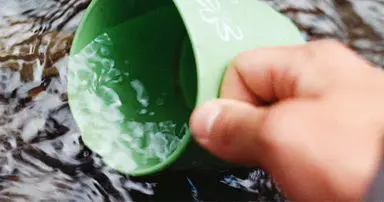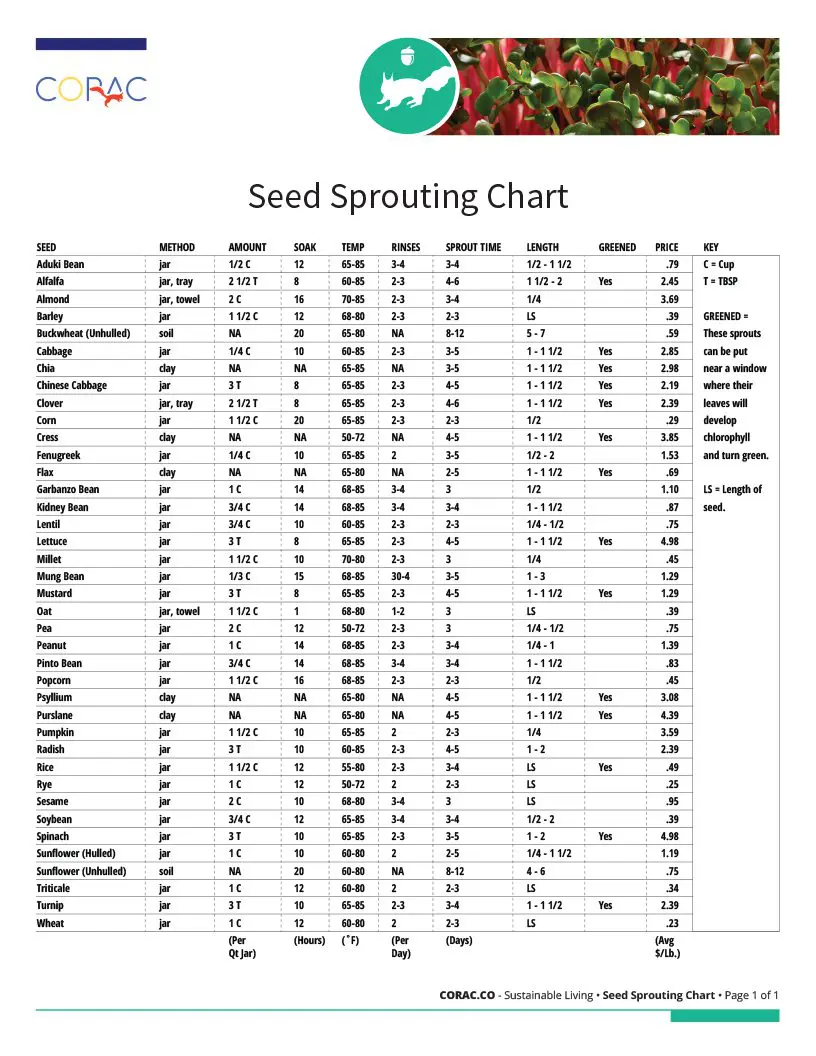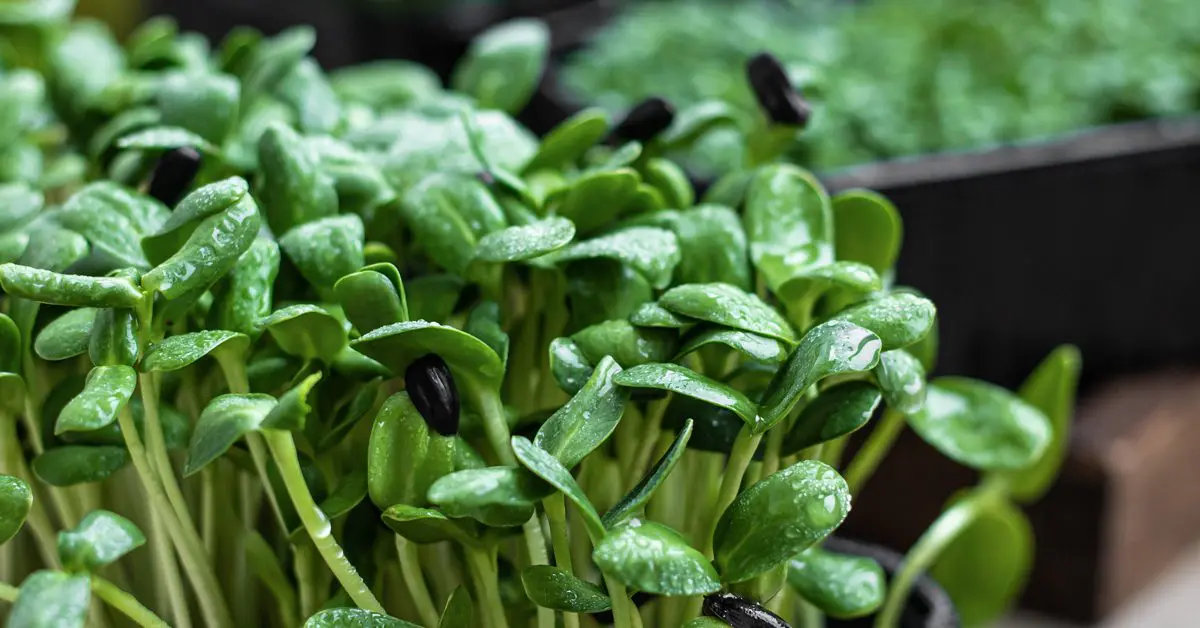Seeds
Start with seeds that are raw and untreated. Bean seeds such as fava, black, and navy can be sprouted by following the information provided for pinto beans on the chart. Soaking Time The number of hours listed don’t need to be followed exactly. Most seeds will do fine if soaked for anywhere between 8 and 14 hours.
Sprouting Methods
- Tray. Soak and rinse the seeds using a perforated plastic tray or wooden box with a plastic screen bottom as a container for the growing stage. Keep the top of the tray or box covered with a clear sheet of plastic and the bottom of the container propped up to allow drainage. This method is especially useful for shoots that you want to expose to sunlight so they can develop chlorophyll.
- Jar. Soak the seeds for the specified length of time (or overnight) in three times their volume of water. Next, place the swollen kernels in a jar fitted with a nylon mesh, cheese-cloth, or plastic screen cover so that its secured by a canning ring or rubber band. Invert the container, at an angle, so the water can drain and leave the jar in a convenient place (but not in direct sunlight). Flush the developing sprouts with clean water two to four times a day, as specified, until the shoots are ready for eating. Suspended nylon or cotton bags can be substituted for jars in this method.
- Towel. Spread pre-soaked seeds evenly over the surface of one moist towel and cover them with another towel. Put the cloths and seeds in a plastic bag and set the bundle in a warm place. Give the seeds fresh moisture each day by misting them. If the sprouts are not ready to eat after two days, the towels should be changed to prevent spoilage. This method works well for grains and larger seeds.
- Clay. Seeds listed for this method produce a gel when soaked and are difficult to rinse. Put such “mucilaginous” seeds with an equal amount of water into an unglazed clay flowerpot saucer, then set the saucer in water and cover it with a plate. The liquid can reach up to one-half inch short of the rim. No rinsing should be needed. If the seeds become too dry, mist them. If they’re too wet, remove the top plate for a day.
- Soil. Soak the seeds and let them sprout in a jar or other container for 16 to 24 hours. Next, spread them in a box that’s lined with a one-inch layer consisting of equal parts moist peat moss and topsoil. Cover the container with a black plastic sheet. When the plants are an inch tall, remove the sheet, place the box in sunlight, and add water as needed. This method is commonly used to sprout immature greens for salads. It can also be used to grow wheat, rye, and triticale grasses, which are then juiced for their nutritional content.
Ideal Temperature
Sprouts will usually grow at slightly higher or lower temperatures than the chart indicates. At lower temperatures, fewer seeds will germinate and the process will take longer.
Water Rinses
Rinse water should be cool or room temperature, neither cold nor warm. It you use tap water, let it sit in a window for a day or more so the chlorine can evaporate. Sprouts will need to be rinsed most often when the weather is hot and dry.
Sprouting Time
The flavor of sprouts changes constantly as they grow. Sample them at different stages to find out when they best suit your taste.
Price of Seeds
Sprouting seed prices can vary greatly by source, changing dramatically in short periods of time. The figures on the chart should only be used as rough estimates.
Suggested Uses
Eating raw sprouts alone or added to other food, such as sandwiches and salads, is the best way to obtain their full nutritional benefits in most cases.
Seed Sprouting Chart
Click the download button below for a detailed Seed Sprouting Chart that provides method, temperature, time, and cost information for 39 different types of sprouting plant seeds.
MORE IN THE SERIES
SPROUTING 101
SPROUTING 103 – Seed Recommendations




























0 Comments